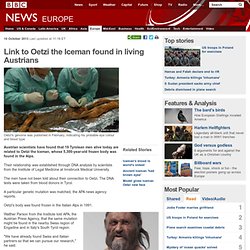

Alabama city destroying ancient Indian mound for Sam's Club. The ancient Indian mound in Oxford, Ala. targeted for destruction.

(Photo courtesy of the blog Deep Fried Kudzu) City leaders in Oxford, Ala. have approved the destruction of a 1,500-year-old Native American ceremonial mound and are using the dirt as fill for a new Sam's Club, a retail warehouse store operated by Wal-Mart. A University of Alabama archaeology report commissioned by the city found that the site was historically significant as the largest of several ancient stone and earthen mounds throughout the Choccolocco Valley. But Oxford Mayor Leon Smith -- whose campaign has financial connections to firms involved in the $2.6 million no-bid project -- insists the mound is not man-made and was used only to "send smoke signals.
" How to reconstruct a 500-year-old face. Plebs (TV series) On 23 August 2013, it was announced that the show had been renewed for a second series in 2014.[3][4] "When in Rome do as the Romans do"- Ancient Rome is traditionally imagined as the home of emperors and senators, generals and gladiators, and a dignified theatre of pomp and ceremony.

Plebs follows the lives of three desperate young men from the lower classes as they try to participate in sexual intercourse, hold down jobs and climb the social ladder in the big city. Two are free men: Marcus (Rosenthal) and Stylax (Fry), who work in a scriptorium in the company of Water Boy (Man), Aurelius (Basden); the third leading character, Grumio (Sampson), is their lazy slave with an attitude problem.
Marcus and Stylax live next door to two Britons, Cynthia (Colquhoun), an aspiring actress, and her slave Metella (Bewley). Plebs. Historian uncovers evidence of football match from 1320. A recently discovered court roll has uncovered evidence that the game of football was played as early as 1320 in the town of Hollesley in Suffolk, England.

It is one of the earliest records to show that a version of the popular sport was played in the Middle Ages. John Ridgard’s article, “Suffolk’s Earliest Football Match at Hollesley in 1320 (in Whitsuntide Week ?)” Details how in 2010 historians uncovered several Hollesley manor court-rolls and other medieval documents about the village, which lies just off the southeast English coast. One of the longest documents is the proceedings of the local court (known as a Leet Court) on Saturday, June 14, 1320.
This includes a reference to four pairs of men involved in bloody assaults (‘traxit sanguinem’) during ‘campyng’. Camping, also known as campyon, campan, or campball, is the earliest English version of football. Rigard, who has focused his research on medieval Suffolk and its role in the 1381 Peasants’ Revolt, adds: 3D Printing Helps Identify World War I Soldier. Posted on May 27, 2013 A team of researchers from Canada's Directorate of History and Heritage have managed to identify the remains of a World War I Soldier.

The team used forensic anthropology, facial reconstruction, isotopic analysis and 3D printing to ID the fallen soldier. Private Thomas Lawless was killed on June 8th 1917. His body, along with a comrade, was discovered in 2003 on a construction site. The comrade could be identified using DNA testing but the team were unable to find a mitochondrial DNA sample to compare Private Lawless' DNA. The identification team created 3D computer models of Lawless' skull, derived from CT scan data of several large skull fragments, in order to narrow the list of possible matches for the remains.
Using muscle markings on the skull model, scientific tissue-depth tables and plastilina modeling clay, the team worked with noted artist Christian Corbet to construct a face on the model.
Link to Oetzi the Iceman found in living Austrians. 10 October 2013Last updated at 11:18 ET Oetzi's genome was published in February, indicating his probable eye colour and blood type Austrian scientists have found that 19 Tyrolean men alive today are related to Oetzi the Iceman, whose 5,300-year-old frozen body was found in the Alps.

Their relationship was established through DNA analysis by scientists from the Institute of Legal Medicine at Innsbruck Medical University. The men have not been told about their connection to Oetzi. The DNA tests were taken from blood donors in Tyrol. A particular genetic mutation was matched, the APA news agency reports.
Museums. Faces of the First World War. Faces of the First World War – IWM Centenary project launched on Flickr On Armistice Day 11.11.11, IWM made 100 previously unseen portraits of those who served in the First World War publicly available for the first time on Flickr Commons.

IWM will continue to upload photographs to Flickr Commons every weekday until August 2014, the 100th anniversary of the outbreak of the First World War. The photos were collected by IWM between 1917 and 1920. All of them tell a story. Those shown in them fought – and often died – for Britain and the Commonwealth during the First World War. Get involved The full story is not always known. Use any means you can – online newspapers, museums, libraries and archives – to build up more of a picture about those in the photographs.